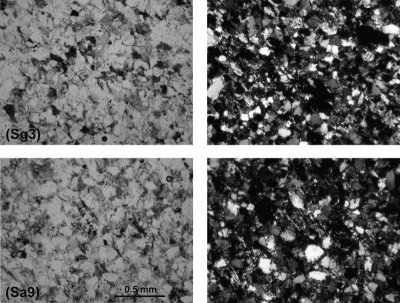 Institute of Archaeology Institute of Archaeology |
[Slovenian] |
| Home | Members | Programme | Projects | Laboratory |
| Database | Publications | Library | Links | Archive |
|
STARE GMAJNE PILE-DWELLING SETTLEMENT AND ITS ERA Federico BERNARDINI, Emanuela MONTAGNARI KOKELJ, Gabriella DEMARCHI & Antonio ALBERTI 12. Scambi e strategie di approvvigionamento nel Ljubljansko barje del iv millennio a.c. dedotti dallo studio archeometrico di manufatti in pietra
Abstract We present results of archaeometrical research of almost 50 stone tools – mostly flat and shaft-hole axes – originating from the bed of the Ljubljanica and several sites of Ljubljansko barje, including Stare gmajne, dating to the second half of the 4th millennium BC. The majority of finds shows exploitation of local raw materials. Tuffs and tuffites, which occur in the area of northern Slovenia and in gravel deposits of the Sava not far from the Barje, can be found among them. The assemblage also includes a group of tools made of imported rocks, such as flat axes made of HP metaophiolites from north-western Italy, shaft-hole axes made of serpentinites and metaultramafites, which respectively are likely to originate from central Austria and from a still unknown area, probably located more to the East. These finds indicate that the Ljubljansko barje played a key role as a mediation place between the Po lowland and the Danubian area and between the Eastern Alps and the Balkans in the 4th millennium BC. Keywords: stone tools, archaeometrical analyses, raw materials procurement strategies, exchange, Ljubljansko barje, 4th millennium BC. *** 2009, (Opera Instituti Archaeologici Sloveniae, 16), 366 pages, 258 b-w drawings, photos, tables, graphs and maps, 45 plates, 3 appendices, 20 x 29 cm, hardcover, ISBN 978-961-254-111-8. |
